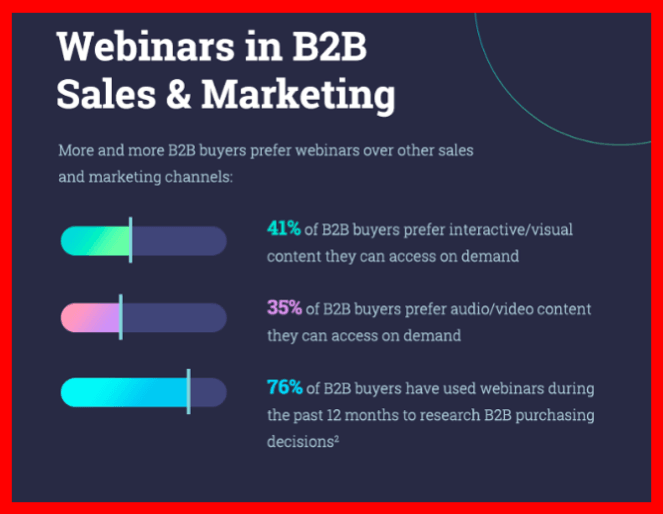
Nurturing leads along the buyer’s journey and turning them into paying customers is a vital part of successful entrepreneurship — but it’s often easier said than done…
Go too long without following up with a prospective client, and they may forget about you altogether. But follow up too often, and your pushiness might just push them away and cause you to lose a big sales opportunity.
Needless to say, marketers need to find the right balance when it comes to nurturing leads. Despite your best efforts, not every lead will become a lifelong customer. But when you use these surprisingly simple tactics, you’ll be far more likely to close the sale and increase your marketing return on investment.
1) Leverage the power of scarcity
I’ve written previously on the power of scarcity in marketing, and this idea of creating a sense of urgency among prospective buyers can be just as applicable when trying to nurture a sales lead.
After all, there’s a big difference between sending an email that says “Your offer is still waiting” and one that says “Your offer expires in 24 hours!” Essentially, tapping into the fear of missing out can prove more persuasive than merely trying to convince someone of the benefits of buying your product.

Be mindful of the expense and commitment purchasing your product or service would entail. Though scarcity can be powerful, be careful to not overemphasize it to the point that you miss out on customers who might want a slightly longer period to make their decision.
This is especially likely when customers would be signing up for a year-long subscription or paying several thousand dollars for your service. Scarcity tactics are typically most effective with lower-cost items, but they can still increase sales of more expensive services when balanced with the right type of offer.
2) Unleash content marketing
When deliberating over a buying decision, prospective customers have a tendency to want to gather as much information as possible. Chances are, they don’t want to hear a bland sales pitch. They want direct answers to their questions. They want to know just how your product or service works, and how it addresses their specific needs.
While testimonials and online reviews will certainly help your customers make a decision, you will go a long way in building trust if you provide helpful information through your own content marketing efforts. Conversational and relevant content, such as case studies or how-to’s, will give your leads confidence in your product or service.
Of course, you can’t just post a few blog articles to your own site. Delivering this content through as many channels as possible is crucial for leads to find and benefit from it.
Management software tools can simplify this process by allowing you to schedule out blog and social media posts in advance. This scheduling will then make it easier for your sales team to send email updates when content relevant to a particular lead has gone live.
3) Connect through webinars
While you might be able to answer some of your leads’ questions through your content marketing materials, you shouldn’t count on everyone finding your company blog.
Webinars are a great alternative form of delivering content to your leads that can help you answer questions or even demo your product in an engaging, interactive setting. This long-form content can be highly effective — according to ClickMeeting’s “State of Webinars” report, an incredible 76 percent of B2B buyers use webinars to research a company purchase.

During these live video streams, you can also discuss key pain points your product or service addresses to help leads more strongly consider making a purchase. You can also use Q&A sessions to alleviate customer concerns or even get future content ideas.
I’ve learned that reliable webinar tools can make all the difference for your success in using this content delivery channel. Look for tools that will let you set up a customized webinar with only a few clicks while also offering a reliable video stream and useful statistics. This way, you can focus more of your time and energy on providing great content through the event, rather than worrying about setting up the video stream.
4) Offer a limited free trial
You can share testimonials and in-depth articles, but for many leads, the best way to make a decision is to experience your product or service first-hand.
Case studies have found that as many as 40 to 60 percent of free trial users for SaaS products eventually become paying customers. A free trial gives potential customers the chance to fully experience what it would be like using the service so they can make a more informed decision and have confidence when they buy.
When someone signs up for a free trial of your service, they immediately signal themselves as a highly qualified lead. This instantly indicates to your sales team that someone is more interested in your product, and as a result, customized followup messages are less likely to come across as pushy.
Better still, free trials can help you collect customer feedback to further improve your services.
Nurturing toward success
With the right messaging and the right mix of communication tools, you can become far more effective at closing leads than if you simply bombarded them with emails day after day.
By using these lead nurturing tactics to guide qualified leads through the buying process, you’ll achieve higher sales rates and avoid coming across as pushy or obnoxious.
Get the TNW newsletter
Get the most important tech news in your inbox each week.





